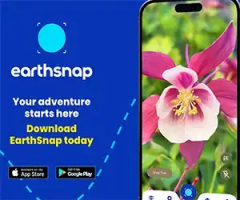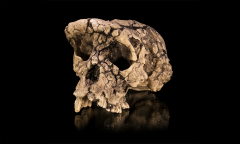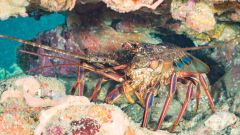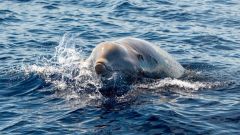Biology

Jan 5th, 2026 - Follow Earth on Google Emerald ash borers have carved a deadly path through North America's ash trees, leaving foresters with few practical options at large scales. Now, scientists in Minnesota have uncovered an unexpected ally already living in those forests: native fungi that can rapidly kill the invasive beetles. In lab tests, four locally sourced fungal strains cut emerald ash borer survival to just a few days, pointing to a new, biologically based way to slow the pest's spread. The ... [Read More]
Source: earth.com
Jan 5th, 2026 - Pacific Grove is known as 'Butterfly Town USA' for its role as an overwintering spot. As the insect's population plummets, residents are coming to its rescue In the tiny seaside village of Pacific Grove, California , there's no escaping the monarch butterfly. Here, butterfly murals abound: one splashes across the side of a hotel, another adorns a school. As for local businesses, there's the Monarch Pub, the Butterfly Grove Inn, even Monarch Knitting (a local yarn shop). And every fall, the ... [Read More]
Source: theguardian.com

Jan 5th, 2026 - A remarkable ancient community of organisms was discovered through a fossil trove found at the Grand Canyon . In 2023, a team of researchers, led by Giovanni Mussini of the University of Cambridge, found an array of fossils along the Colorado River. They grabbed the samples, brought them back to the lab, and further study revealed why it was one of its kind. According to the findings published in Science Advances , the fossils embedded in the rocks of Grand Canyon were found with their soft ... [Read More]
Source: greenmatters.com

Jan 5th, 2026 - Follow Earth on Google Birds are among the most visible forms of wildlife, yet they are often overlooked. Found everywhere people live, they respond quickly to environmental change. Their behavior and movements provide valuable insight into ecosystems shaped by both nature and human activity. A familiar bird species missing from a neighborhood or appearing later than expected often points to deeper environmental change. National Bird Day 2025 offers a moment to consider these signs and what ... [Read More]
Source: earth.com

Jan 5th, 2026 - Nautilus Members enjoy an ad-free experience. . W hen a young adult leaves home to work or study, there's a good chance they'll settle into life in a new locale. A Pew Research Center survey found only 18 percent of United States adults between the ages of 25 and 34 live in their parents' homes, despite the potential advantages of familiarity and lower costs. In contrast, for many species, females return to their homelands to reproduce. Such "natal philopatry" has been recorded in animals as ... [Read More]
Source: nautil.us

Jan 4th, 2026 - Follow Earth on Google Millions of years before modern Britain took shape, snakes moved across a warm and humid landscape filled with forests, rivers, and wetlands. Fossils from southern England now reveal one such snake, hidden in museum drawers for decades. Careful study has finally revealed a new species that helps scientists understand how modern snakes began. Researchers have named the species Paradoxophidion richardoweni . Fossil bones show a small snake that lived around 37 million years ... [Read More]
Source: earth.com

Jan 4th, 2026 - The earliest ankylosaur flaunted metre-long spikes and a tail weapon. In the rugged badlands of Morocco's Middle Atlas Mountains, a dinosaur bristling with spikes once lumbered across the Jurassic floodplains. It was not the squat, club-tailed Ankylosaurus of textbooks, but something far stranger. A new partial skeleton of Spicomellus afer has confirmed what palaeontologists long suspected: the world's oldest ankylosaur looked like no other animal, living or extinct. A Dinosaur Dressed to ... [Read More]
Source: zmescience.com

Jan 3rd, 2026 - Follow Earth on Google Scientists have documented the ginkgo-toothed beaked whale, a rarely seen deep-diving species, alive off the coast of Baja California, Mexico. The animals surfaced during a survey that finally ended a five-year search for an unexplained underwater sound. That sound, labeled BW43 – a shorthand code for one beaked whale's call – had been turning up in underwater recorders without a face. Scientists were unsure which species produced it or where it originated. ... [Read More]
Source: earth.com

Jan 2nd, 2026 - This ancient insect is the missing link between two living gnat species. The Natural History Museum of Denmark houses a unique collection of 70,000 pieces of amber from various time periods. Surprisingly, while studying this collection, a team of researchers found an amazingly well-preserved fungus gnat inside 40-million-year-old amber. This is the first known fossil of Robsonomyia henningseni , a "rare and never-before-studied species" of gnat. According to the researchers, this ... [Read More]
Source: zmescience.com

Jan 2nd, 2026 - Nautilus Members enjoy an ad-free experience. . W henever you take a stroll, you take advantage of a key feature that separates us from our ape relatives—bipedalism, or walking upright on two legs. Nautilus Members enjoy an ad-free experience. Fossils with signs of this trait can point scientists to our earliest human ancestor, or the first member of the hominin group that includes modern and extinct humans. A possible candidate for this ancient relative: Two decades ago, scientists ... [Read More]
Source: nautil.us

Jan 2nd, 2026 - It's quick and easy to access Live Science Plus, simply enter your email below. We'll send you a confirmation and sign you up for our daily newsletter, keeping you up to date with the latest science news. Facebook X Whatsapp Reddit Flipboard Join the conversation Add us as a preferred source on Google Newsletter Subscribe to our newsletter The group had traveled for thousands of miles, crossing Africa and the Middle East until finally reaching the dimly lit forests of the new continent. They ... [Read More]
Source: livescience.com

Jan 2nd, 2026 - A woman's body has been found to consist of varying proportions of male and female cells because of an extremely rare form of chimerism The forensic examination of a murder victim has revealed that she had chimerism meaning her body contained cells that were genetically distinct, as if they came from two different individuals. In this case, the unidentified woman had varying proportions of male and female cells in different tissues. The most likely explanation for ... [Read More]
Source: newscientist.com
Jan 2nd, 2026 - Sahelanthropus tchadensis that lived in Africa 7m years ago is best contender but more fossils are needed In the murky first chapters of the human story is an unknown ancestor that made the profound transition from walking on all fours to standing up tall, an act that came to define us. The odds of stumbling on the fossilised evidence of such an evolutionary prize are slim, but in new research, scientists argue that an ape-like animal that lived in Africa 7m years ago is the best contender yet. ... [Read More]
Source: theguardian.com

Dec 31st, 2025 - Even as some scientists search for signs of life beyond Earth, other researchers have been discovering new species on our own humble planet faster than ever before . From high up in the mountains to the deep sea, take a tour across the world to meet five new species discovered in 2025. An ancient sea cow in the Persian Gulf Cows often get a bad rap for contributing to greenhouse gas emissions, but a newly discovered species of their ocean counterparts suggests that sea cows have been key ... [Read More]
Source: npr.org

Dec 30th, 2025 - Gathering for mutual defense puts young spiny lobsters at risk of predators. Lobsters are generally notable for their large claws, which can serve as a deterrent to any predators. But there's a whole family of spiny lobsters that lack these claws. They tend to ward off predators by forming large groups that collectively can present a lot of pointy bits towards anything attempting to eat them. In fact, studies found that the lobsters can sense the presence of other species-members using ... [Read More]
Source: arstechnica.com

Dec 30th, 2025 - Beaked whales have rarely been seen. Now scientists are using underwater sounds to help identify these mysterious creatures. On a bright, almost windless day in early June 2024, scientist Elizabeth Henderson was aboard a boat off the sun-drenched coast of Baja California. She and her team perched halfway up the vessel's mast, wielding powerful binoculars and peering round at the calm water. They were looking for beaked whales, a group of species that aren't often sighted because they dive ... [Read More]
Source: bbc.com